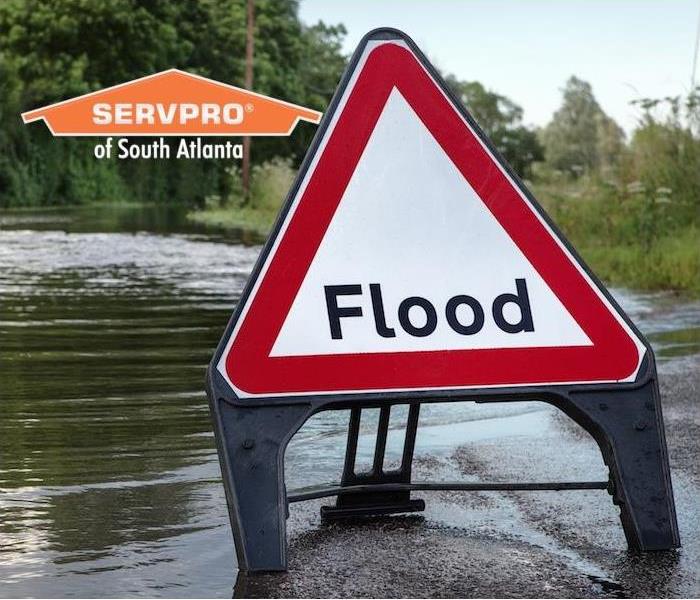You May See These Types of Floods in Your Community | SERVPRO of South Atlanta
4/11/2022 (Permalink)
 Regardless of the cause of the flooding, SERVPRO of South Atlanta has the team to help you recover from any disastrous event.
Regardless of the cause of the flooding, SERVPRO of South Atlanta has the team to help you recover from any disastrous event.
Of all the natural disasters, flooding is the most common in the world, and it claims more lives in the United States per year than hurricanes, tornadoes or lightning. Flooding takes its toll on everything from individual homes to wide swaths of communities and cities.
Flooding affects all 50 states and every U.S. territory. However, there are similarities in types and causality among all them. In general, there are three types of flooding, which happen for four reasons.
3 Types of Natural Flooding
Flash floods are common, and they happen when heavy rain passes or sits over an area and overwhelms the ability of the ground to contain the moisture. Excess water runs off and takes garbage cans, cars and more with it.
River floods are exactly what they sound like. When there’s too much water for a river’s banks to hold, the water spills over the sides and causes destruction.
Coastal floods happen in areas next to large bodies of water, when storm surges or cyclonic activity causes ocean or gulf levels to rise to flood levels.
The 4 Most Common Causes of Natural Flooding
Heavy rainfall. Storms with excessive rainfall, or storms that sit and rest over an area for an extended period can cause flash floods or river flooding. Urban areas are more at risk for flooding because the higher percentage of concrete and asphalt means there’s a lack of soil to soak up all the water. In September 2009, catastrophic flooding hit the Atlanta Metropolitan area after multiple days of heavy rainfall. At its worst, the National Weather Service estimated 10 to 20 inches of rain fell in less than 24 days. Over 20,000 homes and businesses sustained major damage, and the damages totaled around $500 million. Ten people also lost their lives in the historic flooding.
Oceanic activity. Storm surges, hurricanes and rising tides can cause water levels to rise in waves, which can invade coastal communities and wreak havoc.
Dams and levees failing. The most notable example of this in recent history would be the disastrous levee breaks during 2005’s Hurricane Katrina. Levees and dams fail when cracks occur or excess pressure overtakes the dam’s ability to contain the surge of water behind it.
Snowmelts and ice dams. In areas of the country where heavy snow and prolonged freezing temperatures are common, snow and ice can build up over a winter’s time, and when they start to melt, they cause rivers of water to flow through area communities. Ice dams or ice jams happen when rivers become blocked by built-up ice being carried downstream, causing the banks to overflow.
Regardless of the cause of the flooding , SERVPRO of South Atlanta has the tools and teams to help your home or business recover from its disastrous effects. Contact us anytime online or call (404) 592-9634 when flooding or water damage makes a mess in your life. SERVPRO of South Atlanta’s 24/7 Emergency Service will make it like it never even happened.





 24/7 Emergency Service
24/7 Emergency Service